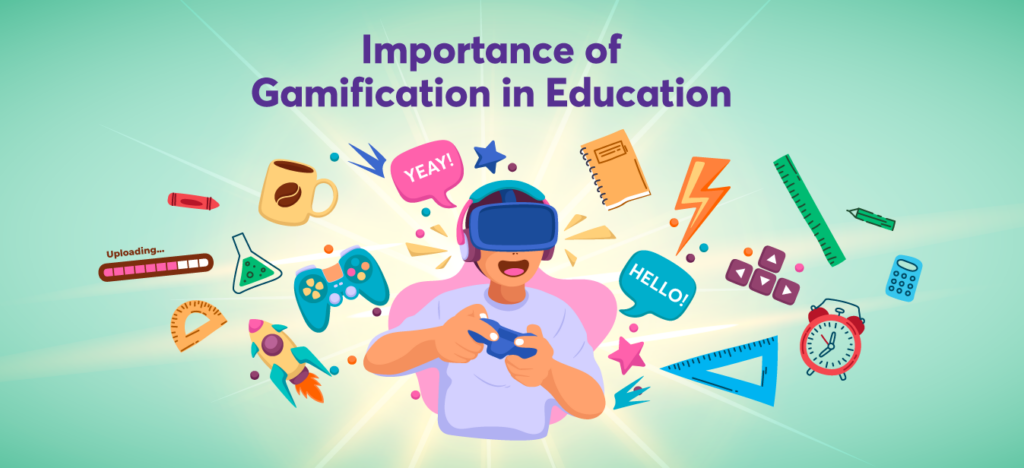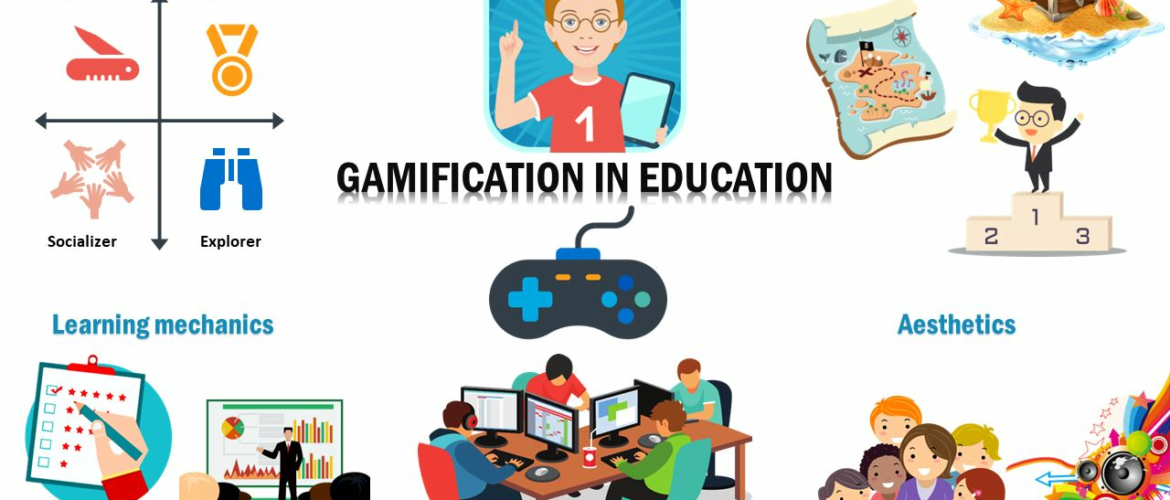Gamification in Education: Leveling Up Learning Through Playful Engagement
In the realm of education, envision a paradigm shift where learning transcends the mundane and transforms into a captivating adventure. Picture students eagerly embracing knowledge, turning away from the dread often associated with traditional homework. This transformative vision isn’t an unattainable utopia—it’s the potential reality brought forth by the concept of Gamification for Education.

1. Defining Gamification for Education:
What exactly is Gamification for Education? At its core, gamification involves integrating game-design elements into non-game contexts. In the educational landscape, this translates to infusing learning experiences with game mechanics such as points, badges, leaderboards, and other elements to enhance engagement and motivation.
2. Unpacking Why Gamification Works:
Games tap into intrinsic motivators, those innate drivers compelling us to learn and play without external rewards. Key components include:
- Challenge: Games offer puzzles and obstacles, sustaining engagement and fostering a desire to learn.
- Feedback: Immediate feedback on progress enables learners to track their journey and refine strategies.
- Autonomy: Games provide choices, granting learners control over their educational experience, instilling a sense of empowerment.
- Social Connection: Games can be solitary or collaborative, nurturing a community spirit with shared goals.
3. The Pervasive Benefits of Gamification in Education:
Numerous studies highlight the positive outcomes associated with gamification, such as:
- Increased Engagement: Students exhibit higher interest and motivation when learning is presented in a gamified format.
- Improved Learning Outcomes: Gamification enhances information retention and application to real-world scenarios.
- Development of 21st-Century Skills: Critical thinking, problem-solving, and collaboration skills are cultivated through gamified learning.
- Increased Motivation: Overcoming challenges within a game-like environment fosters persistence and motivation.
4. Exploring Examples of Gamification in Education:
Various strategies exist to implement gamification in learning, including:
- Points and Badges: Rewarding students with points for task completion and badges for mastering concepts sustains motivation.
- Leaderboards: Tracking student progress on leaderboards sparks friendly competition and encourages improvement.
- Quests and Challenges: Breaking down learning into quests and challenges transforms it into a manageable and exciting endeavor.
- Avatar Personalization: Allowing students to create and customize avatars injects a fun element into the learning process.
- Virtual Worlds: Immersive virtual environments provide a safe and engaging space for students to explore and learn.

5. Gamification in Education Navigating Challenges and Considerations:
While gamification offers immense potential, it’s crucial to recognize:
- Not All Games Are Equal: Effectiveness in promoting learning can vary among different games.
- Focus on Educational Content: The game mechanics should complement and enhance educational content, not overshadow it.
- Not a Replacement for Good Teaching: Gamification is a tool, not a substitute for sound pedagogical practices.
6. The Transformative Potential of Gamification in Education:
Gamification for Education holds the power to revolutionize the educational landscape by infusing learning with excitement, engagement, and effectiveness. Educators, by thoughtfully navigating challenges and leveraging opportunities, can harness the dynamic force of games to create an educational experience that transcends traditional norms.
7. In Conclusion:
So, can video games truly make learning both enjoyable and effective? The resounding answer is yes! However, it’s imperative to remember that Gamification for Education is merely one tool within the educator’s expansive arsenal. When employed thoughtfully and strategically, it becomes a potent force for positive transformation within the classroom.
Config Validation in Laravel: Your First Line of Defense Against Confusion in 4 Steps





Leave A Comment